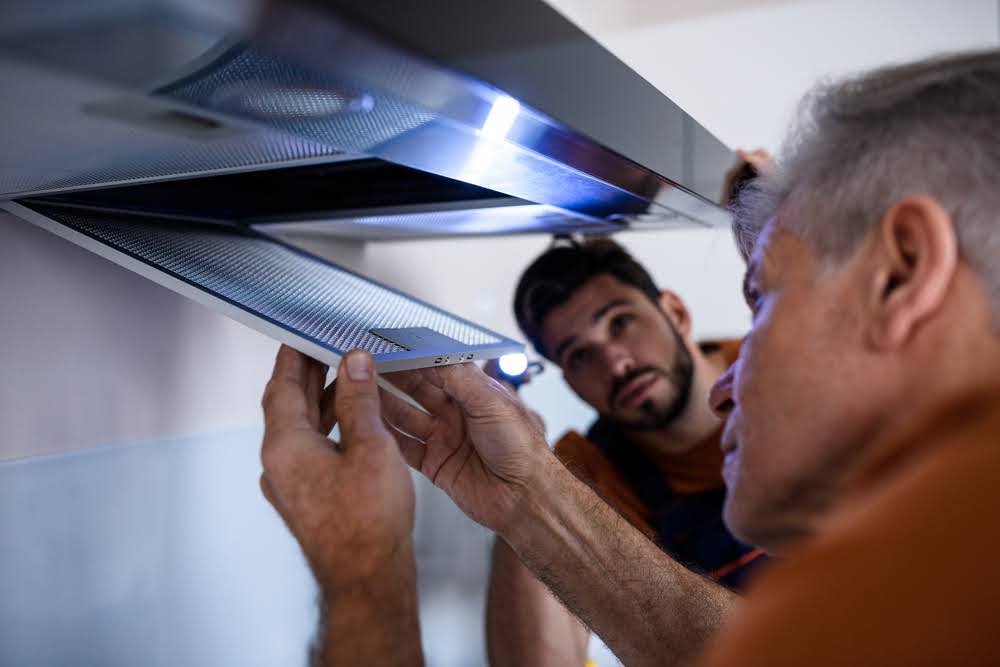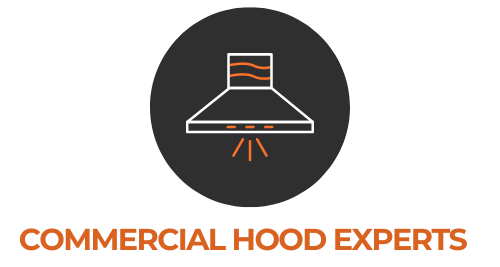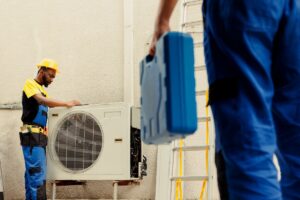A kitchen hood is essential for keeping your cooking space free of smoke, grease, and odors. However, installing it incorrectly can lead to poor ventilation, fire hazards, and costly repairs.
Many homeowners and even contractors make avoidable errors that affect the hood’s performance and longevity.
In this guide, we’ll walk you through the most common kitchen hood installation mistakes so you can ensure a smooth and effective setup.
1. Choosing the Wrong Hood Size
Size matters when it comes to kitchen hood installation. If you install a hood that’s too small, it won’t properly capture smoke and grease, leaving your kitchen air dirty. On the other hand, an oversized hood can be excessive, taking up too much space and making unnecessary noise.
As a rule of thumb, your hood should be at least as wide as your cooktop. For gas stoves, going slightly wider than the stove’s surface can improve ventilation.
2. Incorrect Ductwork Placement and Design
Your kitchen hood relies on ductwork to move air efficiently. Poor duct placement—such as using too many bends or a long, narrow duct—restricts airflow and makes the hood work harder. This not only reduces efficiency but also increases noise levels.
To maximize performance, keep duct runs as short and straight as possible, and use a duct size that matches the manufacturer’s recommendations.
Smooth metal ducts are better than flexible ones since they allow air to move more freely.
3. Failing to Vent Outside When Necessary
A ducted kitchen hood should always vent air outside, not into your attic or another room. Failing to do this leads to grease buildup, mold growth, and poor indoor air quality.
While recirculating hoods with charcoal filters are an option, they don’t remove heat and moisture as effectively as vented systems.
If your kitchen layout allows, always opt for an exterior vent to keep your cooking space fresh and safe.

4. Improper Hood Mounting Height
The height at which you install your hood significantly affects its performance. If it’s too high, it won’t capture smoke efficiently. If it’s too low, it poses a fire hazard and makes cooking uncomfortable.
The ideal mounting height depends on your stove type—typically 18 to 24 inches above an electric stove and 24 to 30 inches above a gas stove. Following these guidelines ensures the hood effectively captures and removes airborne particles.
5. Overlooking Electrical and Safety Requirements
Aside from ventilation, a kitchen hood also requires proper electrical work. One of the biggest mistakes is failing to use a dedicated circuit or skipping professional wiring, which can lead to overloaded circuits and fire risks.
Make sure your hood is properly grounded, follows local electrical codes, and is installed by a qualified technician if necessary. Safety should always come first.
Conclusion
Avoiding these kitchen hood installation mistakes will save you time, money, and frustration in the long run.
A well-installed hood improves air quality, reduces maintenance issues, and enhances your overall cooking experience. If you’re unsure about any step, consulting a professional can help ensure a seamless and safe installation.
Need Expert Help with Your Kitchen Hood?
Don’t let installation mistakes compromise your kitchen’s safety and efficiency. At Commercial Hood Experts, we specialize in professional installation, maintenance, and repair services. Contact us today to ensure your kitchen hood is set up for optimal performance!





